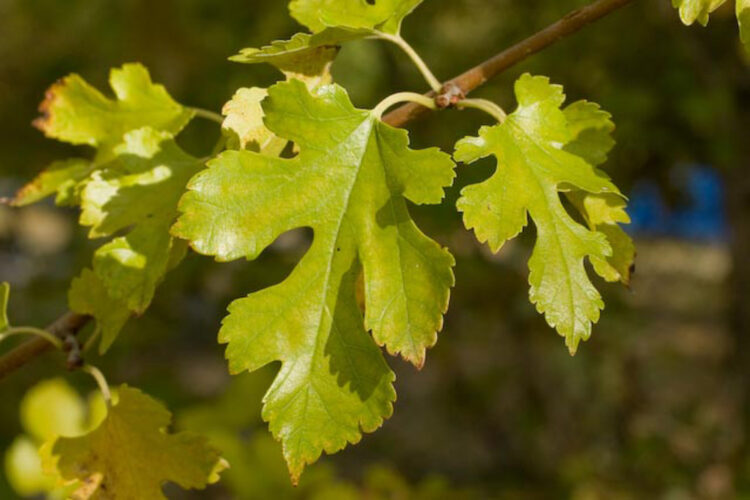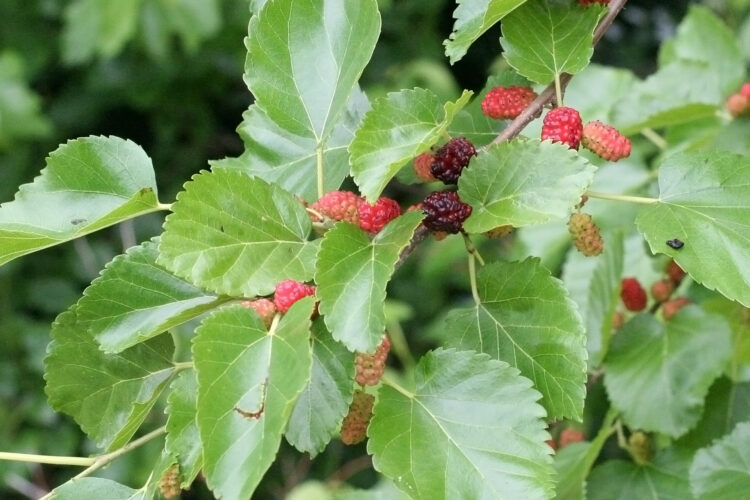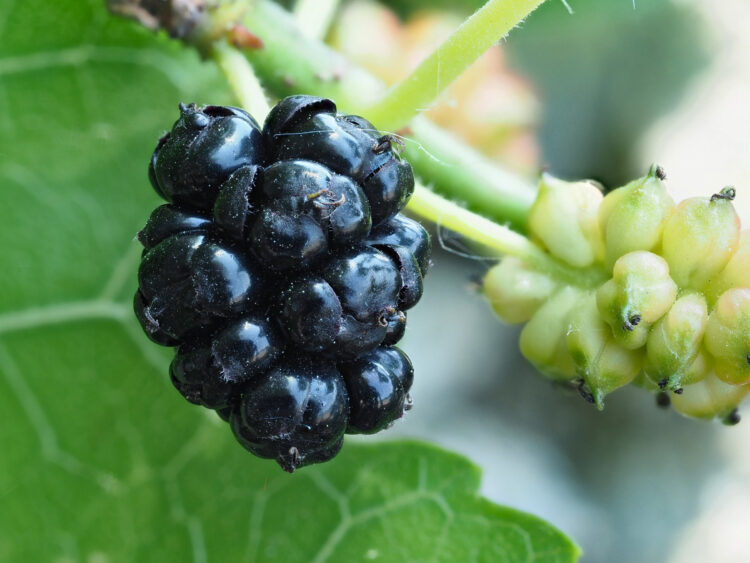white mulberry (Morus alba)
Moraceae, the mulberry family
How to recognize white mulberry. This weedy small tree has has alternate, simple, serrate leaves that vary remarkable in the pattern of leaf lobing. Reminiscent of sassafras, the leaves, even on the same tree, can be unlobed, once-lobed like a mitten, twice lobed, or even 4 or more-lobed. They are hairless and glossy.

White mulberry leaves are very variable.
Sometimes the leaves have several lobes.

A very lobed mulberry leaf.
Flowers and Fruits. Mulberries are doiecious, i.e., with separate male and female individuals. It was flowering in the 2nd week of May 2023 when these pictures of late-stage flowers were taken. The males are in short catkins.

White mulberry flowers. Left: staminate (male flowers. Right: pistillate (female) flowers.

White mulberry fruits superficially resemble raspberries.
Like raspberries and blackberries, mulberries are groups of many small fruits.
Unlike those members of the rose family which are aggregate fruits, i.e., derived from a single flower with an apocarpous gynoecium, mulberries are multiples originating from head-like compact inflorescences. But what type of fruits are they multiples of? It is sometimes assumed that, like blackberries and raspberries, that they are drupes. Nope! According to H.A. Gleason in “The New Britton and Brown Illustrated Flora of the Northeastern United States and Adjacent Canada” (1968) tells us that the fruit is “…a short-cylindric syncarp resembling a blackberry, composed of the juicy, accrescent but not coherent calyces, each enclosing a small seed-like achene, with the remains of the styles protruding.” Hmm. Juicy calyces enclosing achenes, wow! Below see a closeup taken June 1, 2023. You can see that the juicy parts are separable.

The white mulberry fruit is a multiple of achenes surrounded by fleshy calyx segments.
In the winter. The twigs are gray, smooth, with ocal leaf scars containing several scattered bundle scars. The buds are scaly, triangular, and appressed to the twig.

white mulberry twig
Where to find white mulberry . E. Lucy Braun, in The Woody Plants of Ohio (1961, 1989; The Ohio State University Press) tell us that that white mulberry is “From Asia; long cultivated and frequently seen as am escape…Reported from more then three-fourths of the counties, throughout the state.”
Scanned Image from an Old Book
(Flora of West Virginia, by P.D. Strausbaugh and Earl L. Core)

White mulberry is on the right.
Ooh ooh. I have a question!
How and why and from where did white mulberry become established in North America?
A native of China, white mulberry is the food source of the silk moth larvae and was introduced to the U.S. in the early 1600s with the goal of establishing domestic silk production. The silk industry didn’t take off, but the mulberry tree did. (Subsequent introductions for horticulture have also occurred.)
